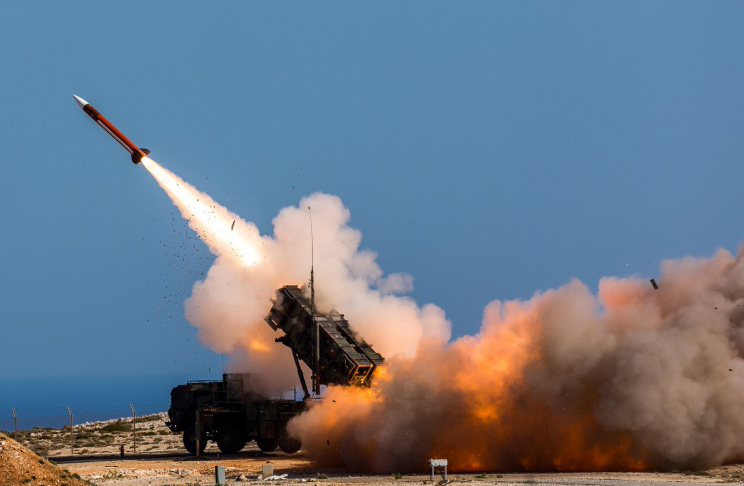The news that thousands of unaccompanied children are crossing the U.S. border is just making headlines, but the surge has been happening for months, even years. President Obama is asking Congress for $3.7 billion to tackle the issue, which has become a flashpoint in the debate over immigration.
The number of children has overwhelmed the U.S. immigration system, which faces a backlog of hundreds of thousands of undocumented migrants, according to The Associated Press.
President Barack Obama says that violent crime is driving migrants north, while Republicans blame Obama’s policies, saying they have given migrants an incentive to come.
Here’s what you should know about the crisis.
How Many Kids Are Trying to Cross the Border Alone
Since October, more than 57,000 children have been caught traversing the U.S.-Mexico border without an adult. That’s more than double the number in 2012 and triple the number in 2011, according to the Department of Homeland Security. The U.S. Border Patrol was already noticing an increase in children coming up from Central America in the fall of 2011. Most of the apprehended children are between 14 and 18-years-old, according to the Women's Refugee Commission.
Three-fourths of the kids caught since October have traveled over 1,000 miles — by car, train, raft and foot — from the Central American countries of Honduras, Guatemala and El Salvador. The rest are from neighboring Mexico, according to Border Patrol data.
U.S. & World
News from around the country and around the globe
Making the trek is uncertain and dangerous. Smugglers, or coyotes, charge up to $10,000 for each child, according to The Associated Press. These smugglers may take the children’s money and run, or worse, assault or traffic them. The journey is also physically challenging, with dense forests, dry deserts and rugged mountains along the way. One stretch of land in Texas is referred to as the "killing fields."
Migrant children aren't just traveling to the U.S. All of Central America is seeing an increase. Mexico, Panama, Nicaragua, Costa Rica, and Belize jointly documented a 712 percent increase in the number of people seeking asylum from El Salvador, Honduras and Guatemala, according to the Washington Office on Latin America.
Why They Left Central America
The mass migration is chiefly caused by three things: gang-related violence, poverty and rumors that migrant children will be welcomed to the U.S. if they make it to the border.
• Violence. A good portion of the drug trade is now in Central America and plenty of gangs capitalize on this. Incompetent police forces do little to stop them. Children are actively recruited as "foot soldiers" for cartels. These gangs give children an ultimatum: work in the drug trade or face death. Honduras’ homicide rate was 90 killed per 100,000 people in 2012. That’s the worst in the world and six times the global average. Guatemala and El Salvador aren't far behind.
Gangs run rampant in these countries, and many children find themselves in the crossfire. It is not uncommon for children to arrive at hospitals riddled with bullets. Fifty-eight percent of children migrating north are motivated by violent conditions in their home country, according to a report by the U.N. High Commissioner for Refugees.
Trust in the police is low in the children's countries of origin. In many places, gangs and police are intertwined. "You never know who is who," several migrant children told the Immigration Policy Center.
• Poverty. Nearly two-thirds of the Honduran population lives below the poverty line, according to UNICEF. One in three infants is malnourished, and most kids in rural areas will only get four years of schooling on average. Guatemala's poverty rate is 26 percent. In El Salvador 17 percent of the population is living on less than $2 a day, according to the World Bank.
• Rumors. The recent surge may have its roots in rumors that a change in U.S. immigration policy means any child who crosses the border can stay. This is a false belief, according to Homeland Security Secretary Jeh Johnson. Children who arrived after 2007 are not eligible for deferred deportations or a path to citizenship. A Border Patrol report that was leaked in June says families' misconception that they will obtain "permisos" when they arrive in the U.S. is driving most migration, according to Vox.com. They believe "permisos" means work permit, but it's actually a notice to appear in immigration court.
• Family. Over a third of Central American children who traveled to the U.S. alone were looking to reunite with one or both parents. It is common for relatives to send children north to reunite with family members, who also have questionable legal status, according to a report by the U.N. High Commissioner for Refugees.
What Caused the Crisis
In addition to the violence and poverty in Central America, some have said the U.S. government is at the root of the influx, particularly policies put forth by the last two presidents.
• Obama's order. Republicans have blamed the Obama administration for the rumors, saying that poor policy and communication has led migrants to believe they can stay, according to the Los Angeles Times. They say the president has been weak at enforcing border policy and that the Deferred Action for Childhood Arrivals (DACA) program, which was authored by the Obama administration in 2012 and gives some undocumented migrants temporary legal status, has given Central American families a false hope.
• Bush's law. A bipartisan law that President George W. Bush signed in 2008, known as the Trafficking Victims Protection Reauthorization Act, seeks to combat sex trafficking by granting protections to children traveling alone from countries that are not Mexico or Canada. Under the law, unaccompanied children can’t be hastily sent back and are instead allowed an immigration hearing and must be handed over to the Department of Health and Human Services. The Obama administration said the law is partly to blame for the crisis, according to The New York Times. The White House and Republicans are both looking for ways to adjust the law's requirements to make it easier for children to be returned to their home countries.
Where the Migrants Arrive and What Happens When They Get Here
The crisis is happening all along the United States’ Southwest border. The greatest number of migrants are entering through southern Texas, where there has been a 178 percent change in the number of unaccompanied children crossing the border from 2013 to 2014, according to the Department of Homeland Security. Border patrol agents in Texas are overwhelmed and facilities are brimming with migrant children.
The city of Murrieta, California, made national headlines after protesters blocked buses carrying undocumented children and families to immigration processing facilities in Southern California. Overcrowded facilities in Texas looked to ease the burden by sending some migrants there. About 140 migrants ended up in San Diego.
More recently demonstrators on both sides were out in Oracle, Arizona, waiting for unaccompanied children they thought were about to be transferred to a camp there. The children never arrived though anti-immigration protestors briefly halted a bus carrying other children from a YMCA, according to The Associated Press. The Sycamore Canyon Academy in Oracle told NBC News that it had been asked by the federal government to provide shelter temporarily for a small number of children.
When migrant children are apprehended by Customs and Border Protection they are held in a detention center — usually a sterile place that resembles a warehouse. They will remain there until they are transferred to the Office of Refugee Resettlement's Division of Children Services (ORR/DCS). These facilities range from group homes to juvenile detention centers that are locked and surrounded by barbed wire.
Children stay at ORR/DCS facilities for an average of 55 days while authorities attempt to locate a parent or guardian. If none can be found, the child remains in DCS custody for the entirety of her immigration case. Ultimately, she will either end up with her parents or foster parents in the U.S. or be sent back to the country she came from.
What's Being Done About the Influx of People
• More cash. The White House is asking Congress for more than $3.7 billion to address the wave of migration. Most of that cash would go to the Department of Health and Human Services, while Immigration and Customs Enforcement and Customs and Border Protection would also get a share. Almost $300 million would go towards efforts to “repatriate and reintegrate migrants to Central America.” The request must pass both houses of Congress, though, and it's not clear how, or whether, the GOP-led House will vote.
• More shelters. Immigration officials are scrambling to find more shelter space for new arrivals. Dallas County in Texas agreed to shelter 2,000 children if the federal government foots the bill. Hospitals and schools no longer in use are among the buildings that could possibly house the children.
• Foster care. Organizations and families in parts of Texas and the Southwest are taking up kids, particularly those who have no family in the U.S. or no safe places to return to in their home countries.
• Programs in Central America. The Obama administration has earmarked $300 million for programs in Central America to boost the quality of life of people and address the underlying root causes that are driving migration. It hopes to do this by improving economic and security conditions and helping migrants reintegrate into their communities instead of returning north.
• Ad campaigns. U.S. officials are trying to counter the flow of migrants with a Spanish-language ad campaign that looks to frighten them from coming in the first place. The ads warn that smugglers are criminals who could subject migrants to violence, sexual assault, sex trafficking or forced labor.
• Border security. Some in Congress, especially Republicans, have said the focus should be on strengthening border security. Texas Gov. Rick Perry told a congressional committee that unaccompanied kids should be deported immediately to show the U.S. is serious about enforcement. Advocates for migrants have criticized the Obama administration, saying that future funding should go to ensuring migrant children with legitimate claims of asylum see their day in court, not border security.
What's Next
As protests continue and politicians try to figure out the best way to tackle the crisis, migrant children keep pouring in. The Obama administration expects the number of migrant children arriving in the U.S. to rise to 90,000 by September 2014. While visiting Texas, President Obama urged Congress to approve the $3.7 billion he asked for to help deal with the surge.
A first group of about 40 undocumented immigrants, including children, were returned to Honduras from New Mexico, according to the Department of Homeland Security. The group had been staying at a temporary detention center. Homeland Security officials told NBC News that the flight was just the start of deportations. "We expect additional migrants will be returned to Honduras, Guatemala and El Salvador in the coming days and weeks," one official said.
Meanwhile Las Vegas became the latest city to announce that its police department would no longer honor requests from federal officials to detain undocumented immigrants without a court order or arrest warrant. It joins Philadelphia, Chicago, Newark, N.J., and nearly all major urban centers in California.
Officials at the United Nations want many of the people fleeing Central America to be treated as refugees displaced by armed conflict. This designation would increase pressure on the U.S. and Mexico to accept tens of thousands of people currently ineligible for asylum, according to The Associated Press.



